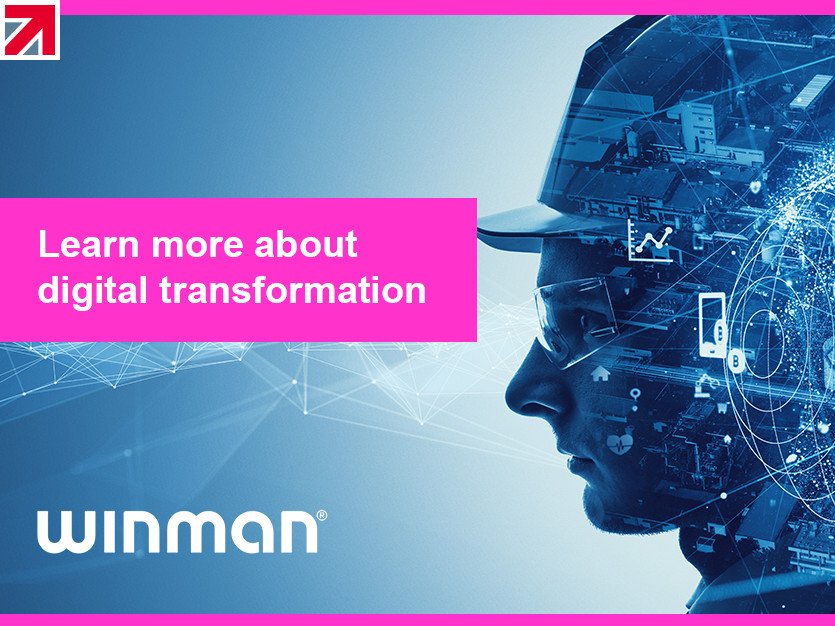Why Manufacturers Are Embracing AI: Why it is Not as Scary as you Think
Artificial Intelligence (AI) has become part of our everyday lives. Even household appliances like tumble dryers are now learning our favourite settings and suggesting what to run first. In the manufacturing sector, AI is making just as big an impact, offering smarter ways to manage production, streamline operations and improve business insight.
Working closely with UK manufacturers, it is clear that early adopters of AI are already gaining a competitive edge. They are using technology to boost visibility, accelerate processes and strengthen compliance. Yet despite the growing presence of AI, there is still uncertainty across the sector. Will it replace human jobs? Is it too complex or costly to implement? These are common concerns, but the reality is far more reassuring.
What Is AI?
Artificial Intelligence refers to computer systems that can perform tasks normally requiring human intelligence. These systems follow algorithms, which are structured sets of instructions designed to solve specific problems. AI can also be combined with workflows, which are sequences of steps designed to complete a task. These workflows can be carried out manually or automatically, often with the help of software.
In manufacturing, AI allows for more informed decision making, improved forecasting, predictive maintenance and a greater level of automation across departments.
How AI is Being Used in Manufacturing
Here are just a few ways manufacturers are already putting AI to work:
Collaborative Robots (Cobots)
Cobots are robots designed to work alongside people rather than replace them. They act as an extra pair of hands, taking on repetitive or physically demanding tasks. Unlike traditional robots that are fixed and programmed for a single task, cobots are agile and adaptable. They can be trained to perform multiple functions, move safely around people and respond to changes in their environment.
Manufacturers use cobots for assembly, packing, heavy lifting and even overnight operations, enabling human workers to focus on more skilled or creative tasks.
Lights Out Factories
Though not yet widespread, the concept of the lights out factory is gaining attention. These facilities operate with minimal human involvement, relying instead on a robotic workforce. With no need for lighting, heating or breaks, these factories can run continuously and more efficiently than traditional setups. While full automation may not be suitable for every business, elements of lights out manufacturing are already being adopted in areas such as overnight machining or automated quality checks.
Digital Twins
A digital twin is a virtual replica of a physical object or system. It uses real time data from sensors on the equipment to monitor its performance, predict issues and recommend improvements. For example, a digital twin of a machine can detect signs of wear before a breakdown occurs, allowing for proactive maintenance and reducing unplanned downtime.
This technology provides manufacturers with better insights into asset performance and allows them to run simulations to optimise their processes.
Robotic Process Automation (RPA)
While cobots are active on the production floor, RPA software works behind the scenes. It automates repetitive and time-consuming tasks such as data entry, invoice processing and system monitoring. This reduces human error and frees up staff to focus on more strategic work.
RPA can also improve IT operations by identifying and resolving server issues automatically, reducing downtime and increasing system reliability.
AI and ERP: A Smarter Combination
Integrating AI with Enterprise Resource Planning (ERP) systems is a natural progression for modern manufacturers. ERP platforms already manage core functions like finance, stock control, production planning and customer orders. When enhanced with AI, these systems become even more powerful.
AI can analyse historical data within an ERP system to forecast demand, optimise stock levels and streamline the supply chain. This not only reduces waste and prevents overstocking but also enables manufacturers to respond more quickly to market changes.
Routine tasks within the ERP system can also be automated using AI. For example, order processing can be completed without manual input, ensuring accuracy and freeing staff for more complex responsibilities.
Real time data from machines, suppliers and customer orders can also be fed into the ERP system, with AI providing immediate insights and suggestions. This means faster, more informed decision making across departments, from operations to finance.
Why It Matters Now
Manufacturers who are embracing AI are seeing real benefits. They are gaining:
-Improved visibility across the business
-Smarter forecasting and planning
-Faster response times to customer and market demands
-Enhanced compliance, including ISO reporting
-Greater confidence in scaling operations sustainably
Investing in the right systems early on gives businesses a strong foundation. Combining AI with an ERP system offers manufacturers the clarity and control needed to grow, adapt and compete in a challenging market.
AI in manufacturing is not a passing trend. It is an evolving toolkit that helps businesses become more efficient, accurate and agile. For manufacturers considering how to stay competitive, integrating AI with ERP is a forward thinking and practical step.
If you are exploring how this could work in your business, get in touch with the WinMan team today or download our ERP features brochure to learn more.
Find out more about WinMan ERP on their member profile page here
Member-created content 4 months ago | From members

